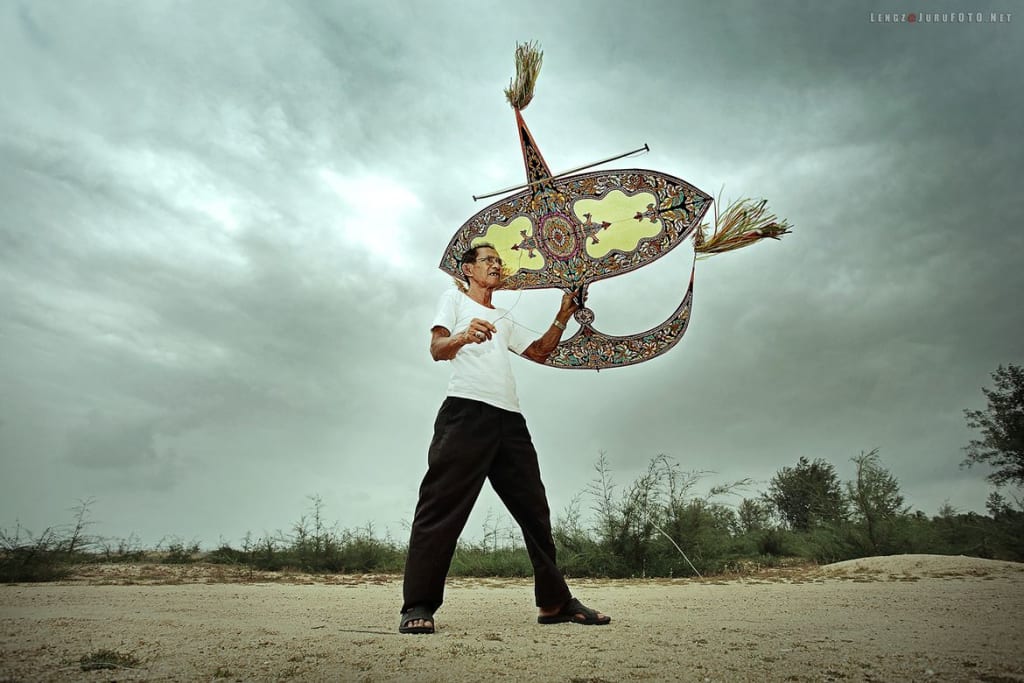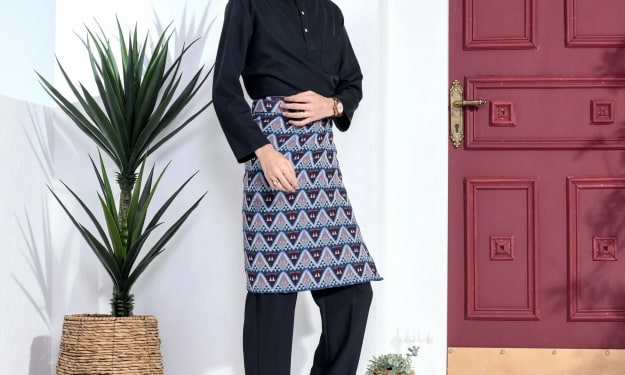
In this article, we will explore the history of the traditional wau, a fascinating kite that has played a significant role in Malaysian culture for centuries. From its early origins to its modern-day significance, the wau has endured as a symbol of Malaysia's artistic and cultural heritage.
Origins of Traditional Wau
It is believed that the history of traditional wau dates back to the 15th century when traders and sailors from China and the Malay Archipelago introduced the kite to the region. The wau's design was inspired by the local flora and fauna, including birds and butterflies, which gave it a distinct appearance compared to other kites from the region.
Evolution of Design
As the wau became more popular in Malaysia, local artisans began to develop their own unique styles and patterns. Each state in Malaysia has its distinct version of the wau, reflecting the local culture and traditions. Some notable examples of wau designs include 'wau bulan', 'wau kucing', and 'wau merak', which represent the moon, cat, and peacock, respectively.
Over time, the materials used to construct the wau have also evolved. While early wau kites were made using leaves and simple materials, modern wau comprises lightweight bamboo or wood frames and is covered with rice paper or silk. The intricate designs are hand-painted or applied using colored paper.
Cultural Significance
Wau has deep cultural significance in Malaysia, going beyond a simple pastime. It was often used during various ceremonies and celebrations, such as the Harvest Festival and the Islamic New Year. Historically, wau was also believed to hold spiritual significance, with some people flying them as a means of communicating with the divine or seeking blessings for a bountiful harvest.
International Recognition
Recognizing the importance of preserving this traditional art form, UNESCO designated wau as an Intangible Cultural Heritage in 2016. This recognition has helped to raise awareness about the wau's cultural significance and encouraged efforts to preserve this centuries-old art form for future generations.
Modern-Day Wau
Today, wau remains a popular activity in Malaysia, with enthusiasts flying their creations during kite festivals and competitions. The art of making wau has also gained global recognition, with Malaysian wau makers showcasing their intricate designs at international kite festivals around the world.
In conclusion, the traditional wau is a beautiful and artistic representation of Malaysia's rich cultural heritage. As it continues to be celebrated and preserved, the wau serves as a symbol of Malaysia's history and identity, and a reminder of the region's diverse artistic traditions.
Tradisional wau is a type of kite that originated from Malaysia and it is known for its unique designs and elaborate decorations. Here are some interesting facts about traditional wau:
Wau got its name from the sound it makes when it flies- a loud 'wau' sound.
Wau is traditionally made from bamboo and paper, with the frame being made from strips of bamboo and the body being made from rice paper or silk.
Each state in Malaysia has its own unique design for wau, with different shapes, colours and patterns.
The largest wau ever recorded was made in Kelantan, Malaysia and it was over 22 metres long and weighed over 100kg.
Wau is not just a recreational activity but it is also a cultural tradition that is often performed during festivals and celebrations such as the Harvest Festival and the Islamic New Year.
The art of making wau has been passed down from generation to generation and has been recognised as a UNESCO Intangible Cultural Heritage since 2016.
These are just some of the many unique and interesting facts about traditional wau that make it such an important part of Malaysia's cultural heritage.
About the Creator
Enjoyed the story? Support the Creator.
Subscribe for free to receive all their stories in your feed. You could also pledge your support or give them a one-off tip, letting them know you appreciate their work.





Comments
There are no comments for this story
Be the first to respond and start the conversation.